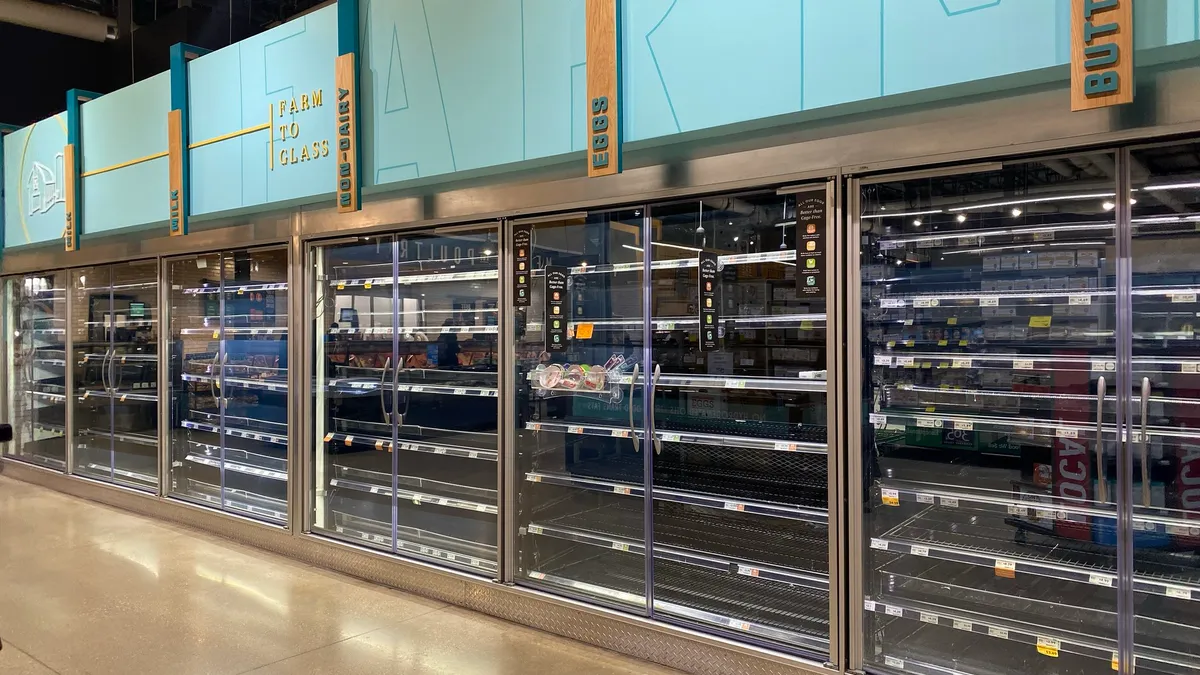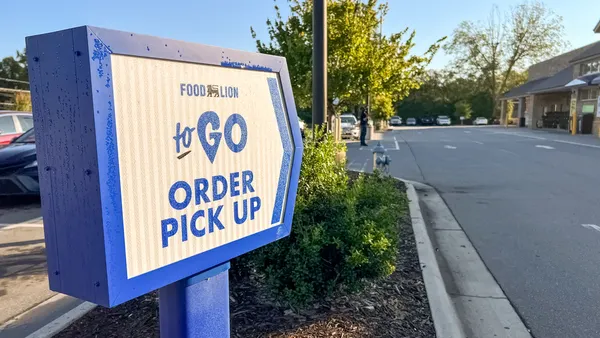Dive Brief:
- A McKinsey survey of 1,500 shoppers found that 20% of them have switched to a new primary store during the COVID-19 crisis. Twenty-three percent of the men and 18% of the women who took the mid-April survey said they intend to continue shopping at their new grocery store after the pandemic is over.
- The main reason shoppers cited for their decision to change stores was that their primary store was out of stock on many items. The desire to find a store with better e-commerce and delivery services was also a key factor for people who switched where they shop. Respondents were also looking for stores closer to where they live or work, perceived to be cleaner or safer, and seen as having more affordable prices.
- Among age groups, people between the ages of 45 and 54 were most likely to have switched to a new store, while those 25 to 34 were least likely to have changed where they shop. People making at least $100,000 indicated they had changed stores at a greater rate than those earning less than that amount. Where people lived also affected how likely they were to have changed grocery stores, with people residing in the Northeast and those in urban areas more likely than others to have made a change.
Dive Insight:
Grocery e-commerce has boomed due to stay-at-home orders but many grocers have had difficulty handling the surge in orders, leaving customers frustrated and looking for alternatives.
The McKinsey results show that finding better online shopping options was a primary driver of store defections, cited by 24% of those who had recently switched their primary grocer. That was a 9% increase among reasons consumers cited compared to six weeks prior. Most primary store defections took place in urban markets, where e-commerce competition and consumer adoption is high.
It's worth noting that McKinsey's figures were captured in mid-April, at a time when mass numbers of consumers were switching from store to online shopping. In the few weeks since then, retailers have added workers, adjusted their systems and opened more time slots for delivery and store pickup. As a result, they may have won back some of the shoppers they lost.
While grocers may be taking a hit as people change where they shop, e-commerce services like Instacart and Peapod, as well as e-grocers like Thrive Market, are benefiting from the surge. Even these companies, however, weren’t fully prepared for the unprecedented increase in online shopping caused by the pandemic, with wait lists and limited shopping hours implemented to control the tsunami of orders.
Physical retailers and online retailers have also been dealing with elevated levels of out-of-stocks as the pandemic has unfolded. Although the panic shopping that gripped the industry in the early stages of the crisis has subsided considerably, shortages continue in certain categories, like meat and eggs. Grocers are using purchase limits to help keep these items on the shelf, forging deals with new suppliers and bringing in new products like plant-based meat.
In order to retain customers and win back people they have lost, grocers are taking steps to keep popular items from selling out, cleaning stores more often and hiring more associates in order to keep up with the extra demands. As the pandemic evolves, shoppers' reasons for sticking with and switching their primary grocers will likely evolve, as well. With some top chains like Kroger and Target phasing out their employee bonuses, it will be interesting to see if worker treatment becomes a motivating factor for consumers.














